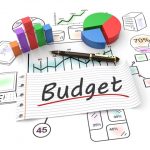Najeeb Many think this should be a corona budget. Maybe it is more than that – a survival budget for the millions of citizens and businesses who need a lending hand.
The pre-Covid-19 economy was saddled with a plethora of headwinds besieging growth to mere 1.9 percent in FY19 and to 2 percent in FY20. Budget FY21 has to design a blockbuster response to a shrinking economy between -0.38 percent and -1.5 percent in FY20 post Covid-19, giving an overwhelming sense of comfort that people remain healthy and that they as well as the country remains financially secure.
Credibly spelling out the impact of the coronavirus on Pakistan’s economy is a realistic starting point. This can establish confidence that we know where we are and where we are likely to be headed. The budget can demonstrate a principled approach of: i) resource generation through tax compliance; ii) deficit reduction by curtailing expenditures; and iii) finance the deficit by a shift to non-debt creating instruments.
In an environment of low economic activity characterized by a supply and demand side shock, conventional revenue measures alone may not be sufficient and can further dampen growth. The economy showed a modest growth of 17 percent in revenues from July 2019 to March 2020, equivalent to new taxes of R 700 billion levied in Budget FY20. FBR tax collection for FY20 after the Covid-19 shock is expected to remain short of Rs4,000 billion – a tad bit higher than the year before. Estimated revenue target collection under consideration for FY21 of Rs 5,101 billion may need some downward adjustment, as a 30 percent growth is unlikely given restraints of business as usual style of working and the effects of the pandemic.
The tax collection target finalized to balance the books can partly be met with a focus on compliance and enforcement. Studies point to a large existent tax gap of 50 percent, exploiting around 15 percent of which can help us with additional revenues of about Rs500 billion. The remainder of the growth in taxes can be handled through a nominal growth of around 8 percent and a modest part if needed from a rise in new taxes or one time levies on land and abnormal profits, both targeted on the abundantly blessed higher income earners, levied for redistributive purposes.
The real test is in ensuring compliance of instruments for raising non-tax revenues. The petroleum levy estimate of Rs489 billion appears to be on the higher side. This collection will depend on resumption of consumption but more so on how smartly oil is hedged by the government at low prices- a once in a generation opportunity. Extra effort would be needed to collect: i) State Bank profits as policy rates continue to fall; ii) dividend income from state-owned enterprises which may shrink due to falling profitability; and iii) mark-ups pending and due on Cash Development Loans. Hard slog will be needed to help collect non-tax arrears such as the Gas Infrastructure Development Cess to the tune of Rs300 billion and current dues of Rs100 billion. Expediting fees from new licenses, recovering royalty on gas, and higher passport and other fees can help.
Financing deficit needs the staunchest change of mindset to move to non-debt creating instruments. One hopes this can restore the public’s flagging faith in the integrity of the policymakers to break the debt cycle. The stalled divestment programme can be revived with a target of $3 billion for FY21. Past recoverables of $800 million of 15-year-old PTCL transaction and part of the recoverable of Rs1,100 billion from consumers in the power sector cannot be left untouched while we continue to raise new debt of Rs200 billion through power sector Sukuk.
An open minded re-think can also help create savings on the expenditure side. A continuing downward trend in discount rate can create room for a substantive saving in the interest payments of the government. The temptation to increase salaries and pensions can be deferred. A minimal consideration for those drawing a salary of less than Rs50,000 along with those managing corona on the front line may be possible. Recruitments can also be deferred.
Development expenditures on bricks and mortar is hard to resist. A revamp of projects based on their rate of return can vastly improve the efficacy of the $4 billion of development spending. Creating livelihood opportunities through development programmes anchored in local rural economies and on regional economies can help create jobs. We can skillfully fund a larger part of development spending by raising monies by asset leasing and Public Private Partnerships. A programme of reduction in tariffs was initiated in FY20 and can gather steam this year to boost industrial production.
Putting more money in the public’s pocket can prop-up demand for goods and services. Incentives through a reduction in sales tax on consumer goods can shore up demand from a market of over 220 million people. Reviewing mortgage lending rules, strengthening bankruptcy rules and creating incentives for banks to lend for the construction sector may actually be equally important as tackling supply side incentives. The budget can support this area.
Multi-rounds of monies for the vulnerable and businesses; and new growth supporting programmes succeeding survival can inspire the confidence of a state looking after the needy and giving wider citizens more buying power. Global research indicates that the harmful effects of Covid-19 may be most on city slum dwellers. Pakistan has an estimated 30 million living in katchi abadis. Special allocation can be a lifeline to them, especially through social protection programmes which are child-centric. Spending on corona is hopefully agreed by the IMF to remain outside the estimated fiscal deficit of 6.6 percent for FY21, a target which itself appears quite conservative. With the prevalent mist, a possible suggestion would be a revision of the June budget in the fall, considering how the health crisis evolves.





